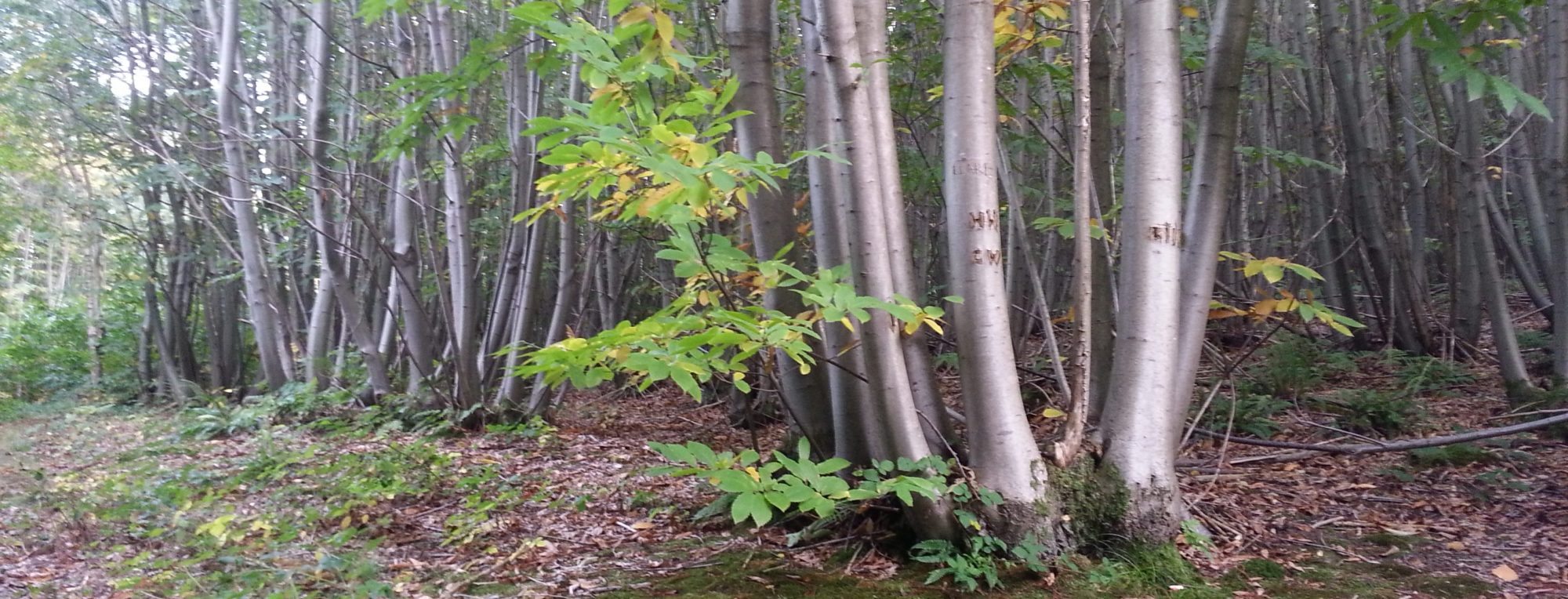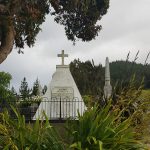Approaching Blenheim on my doomed road trip, I had one further detour to make. The lure of a double shipwreck was certainly an attraction, but what really sealed the deal for me was the promise of something that fundamentally challenged the standard narrative of pre-European Māori – an engineering project on a grand scale.
So I found my way on to Wairau Bar Road, following the sinuous path of the Wairau River’s final stretch before the sea. I parked in the lot at the end of the long road, near the outlet to the ocean. Across the wide river before me lay the flat expanse of Te Pokohiwi, or Boulder Bank, an 8km finger of rock and sand separating the delicate lagoons from the ocean. The bank is a very early Māori settlement site, dating all the way back to the era of the “moa hunters”. Our familiar friend Atholl Anderson, whose work has enlightened us on many aspects of southern Māori history, has even argued that it could be the earliest, opposing other historians who feel the warmer Far North is a more logical starting point. Intriguingly, the recent analysis of several stones found in the South Island, suggesting they were brought from Tahiti, seems to add strength to his claim of South Island first contact.
This was a good option for early settlement, with access to the strategically important Cook Strait, and nearby populations of moa and seals. Archaeological findings suggest 9000 moa were butchered here! The people appear to have been fairly strong and healthy, although most lived no more than 40 years – succumbing to infections, lung issues, or loss of teeth – a big problem in a time before dentures, and probably exacerbated by the sandy environment of the river bar.
But that’s for later. Right now I’m interested in the first of the shipwrecks here: the SS Kennedy. Built in 1864 for the Australian Steam Navigation Co. as a state of the art steamship to ply the Queensland rivers, the company had a change of heart when she ran on to a reef not long after being put into service. This worked out well for Nathaniel Edwards and Co. of Nelson, who were able to purchase her in 1865 as a second ship for their run from Nelson to Hokitika which was booming due to the gold rush. She served in this manner for 54 years.
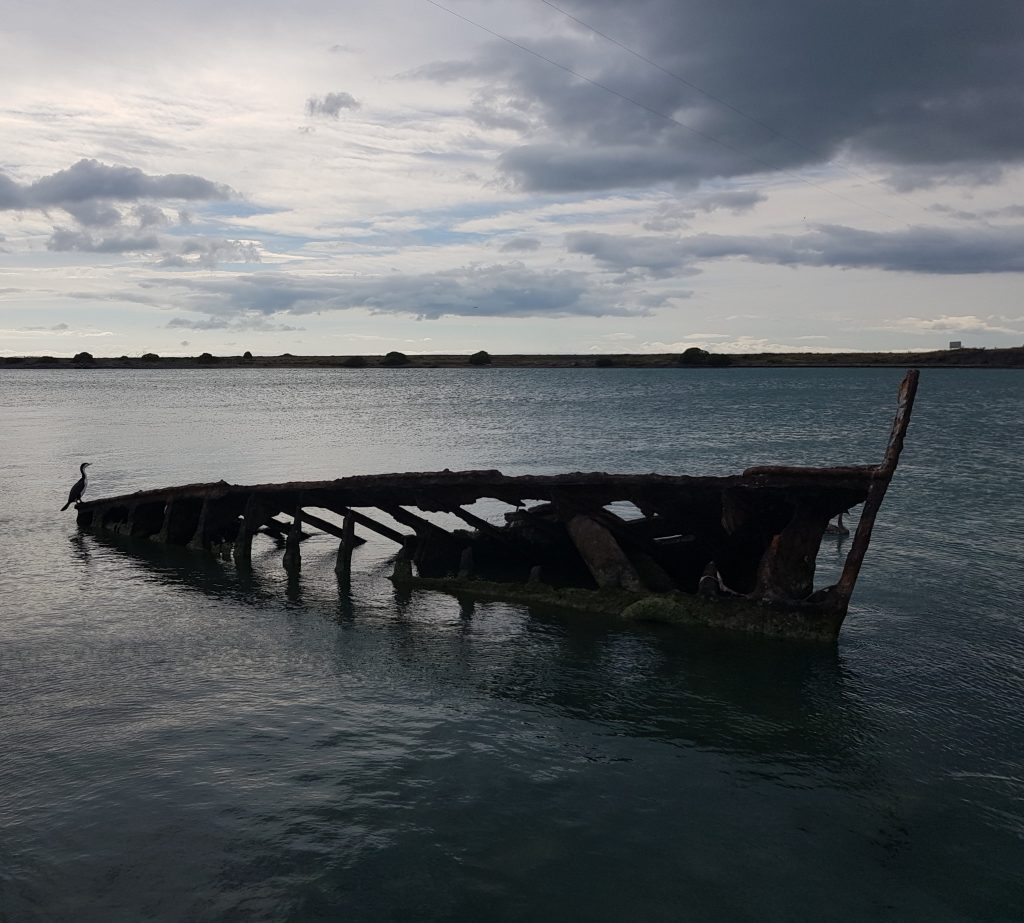
She was sold in 1918 and dismantled at Wellington in 1929. Her hulk was then towed here to form a “floating dam” for the improvement of the river bar, a newspaper report of the time calling her “one of the oldest steamers in Australasia”.
This was actually the second attempt to create a breakwater here, but that too is for later.
I poked around briefly and was greeted by a lone whitebaiter and his dog.

To get to my further points of interest, I had to retrace my steps back to State Highway One and then head slightly further south until I reached Hardings Road and the start point for the Wairau Lagoons Walkway. To reach the track one must first pass between Blenheim’s sewage oxidation ponds, where waste liquid is “matured” before being discharged into the Ōpaoa River.

I made my way on to the mud flats, picking my way beneath a temperamental sun that every so often saturated the world with colour in contrast to the grim steel sky. The odd raindrop sprinkled down, but nevertheless I was soon shedding my jacket.
The flat marsh cloaked in salt-hardy plants seemed to go on forever, and although I reminded myself that this was an area of great cultural and ecological importance, I felt that without the promise of intriguing points of interest along the 3 hour loop, I’d quickly have become bored.
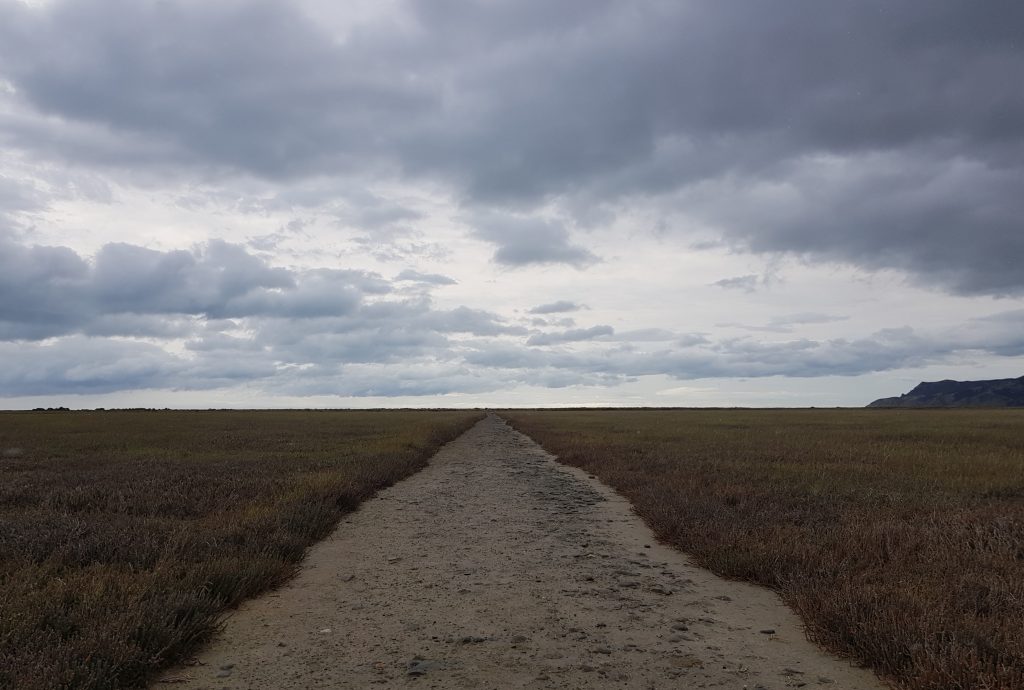
Eventually I came to the first of the landmarks I’d been searching for. Morgans Creek looks like your average wetlands channel, but you should not be fooled by its appearance, for it is in fact an artificial canal dating back to the 1700s, part of 20km of waterways painstakingly excavated by the Rangitane under chiefs Patiti and Te Whatakoiro.
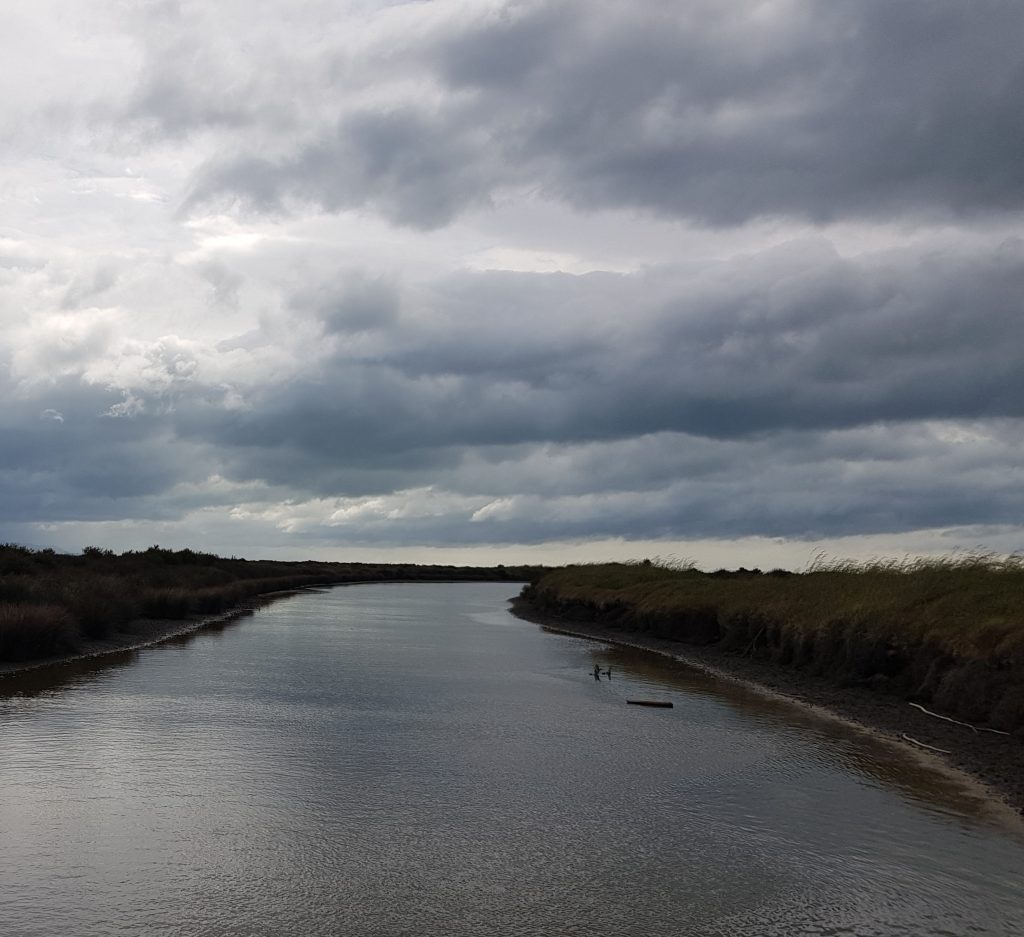
This wetland was once one of the richest food bowls in the area, and hotly contested territory. Ngati Mamoe seized it from the Waitaha, and were in turn ousted by the Rangitane. Fighting pa were constructed in order to protect the area.
It was during a break in these struggles that these waterway systems were built. The purpose was to serve as a harvesting ground for fish and bird life. Bird in moulting season and unable to fly could be herded down the canals for capture, and eel traps were set at locations where the channel narrowed. These valuable resources were then preserved for consumption during the scarcer seasons.
The excavation would all have been done with the ko or digging stick, supplemented occasionally by adze, which makes this painstaking removal of 45,000 cubic metres of soil even more remarkable. The work took more than one generation to complete, and was finished by Te Whatakoiro’s son Nganga.
Sadly, the area is now much depleted of the life it once hosted. The canal-builders had an elaborate system of resource management but the arrival of the Pakeha resulted in uncontrolled hunting. Some day, if managed right, the lagoons may once again burst with abundance.
I continued, and eventually my next goal, the SS Waverley, came into sight. In the featureless landscape it appeared as though the rusting hulk were stranded in the middle of a wide open plain.
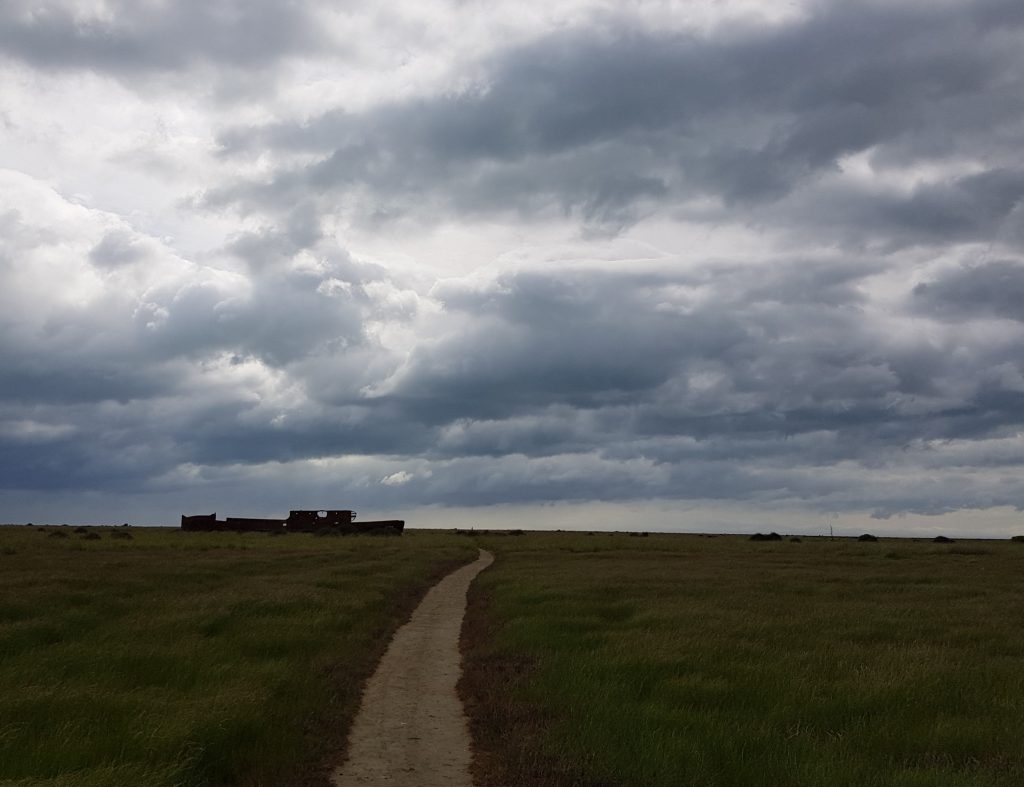
The Waverley was built in Auckland in 1883 for the Patea Steam Shipping Company, and in 1886 was sold to the Anchor Steam Shipping Company of Nelson, for which she plied the routes between Nelson, Wellington and the West Coast for the next 30 years. From 1916 she carried frozen meat between Patea and Wellington for the Patea Farmers’ Co-operative Freezing Company. Like the Kennedy she was dismantled at Wellington, and was the first candidate for her position at the river mouth, however flood waters carried her away before she could be scuttled, and she ended up here.

Later on, the New Zealand Army used her for target practise.
Having seen my second and final wreck, I followed the homeward arc of the loop walk. This brought me along the bank of the lagoon proper, with Budges Island across the water.
The only representative I witnessed of the 90 bird species who call this wetland their home was a single spoonbill, eyeing me suspiciously from beneath his feathered mullet. How different things must have been in the time of the canal builders.
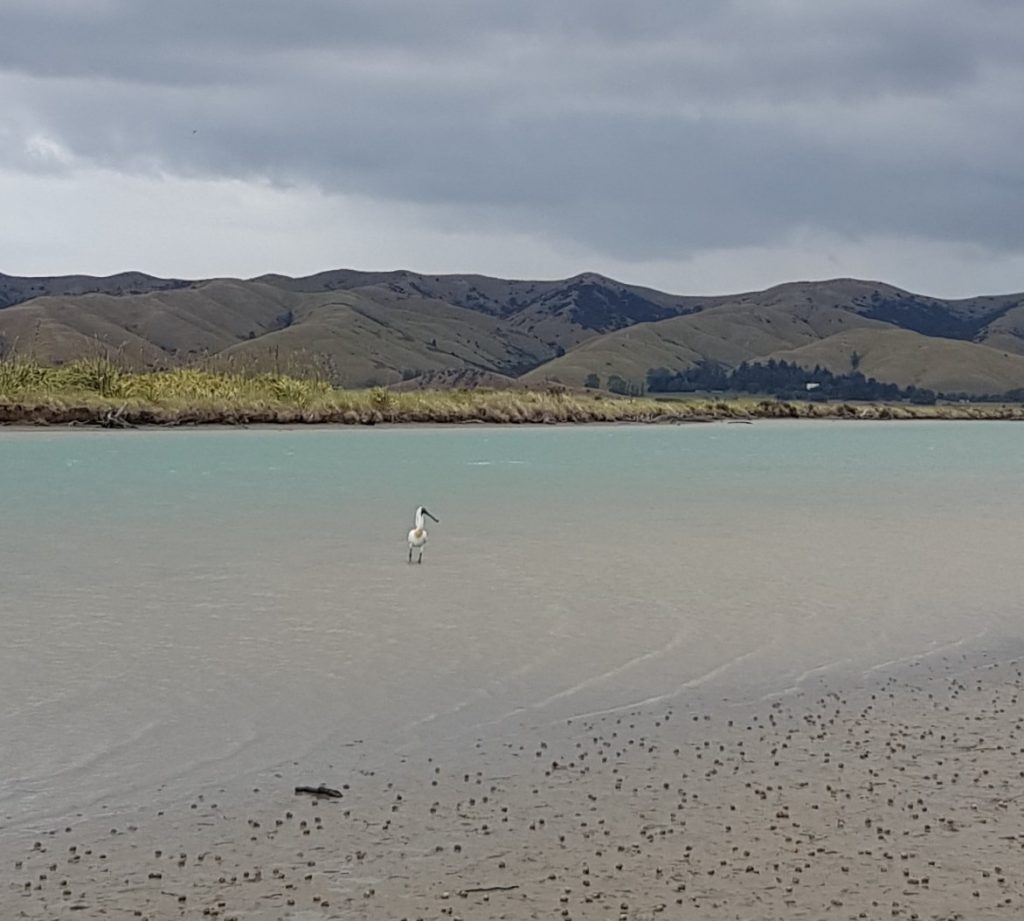
Speaking of which, I once again crossed Morgans Creek, and was able to look across to where the canal continued, bisecting Budges Island. Here it was much more obvious that the excavation was the work of human hands and not natural forces.
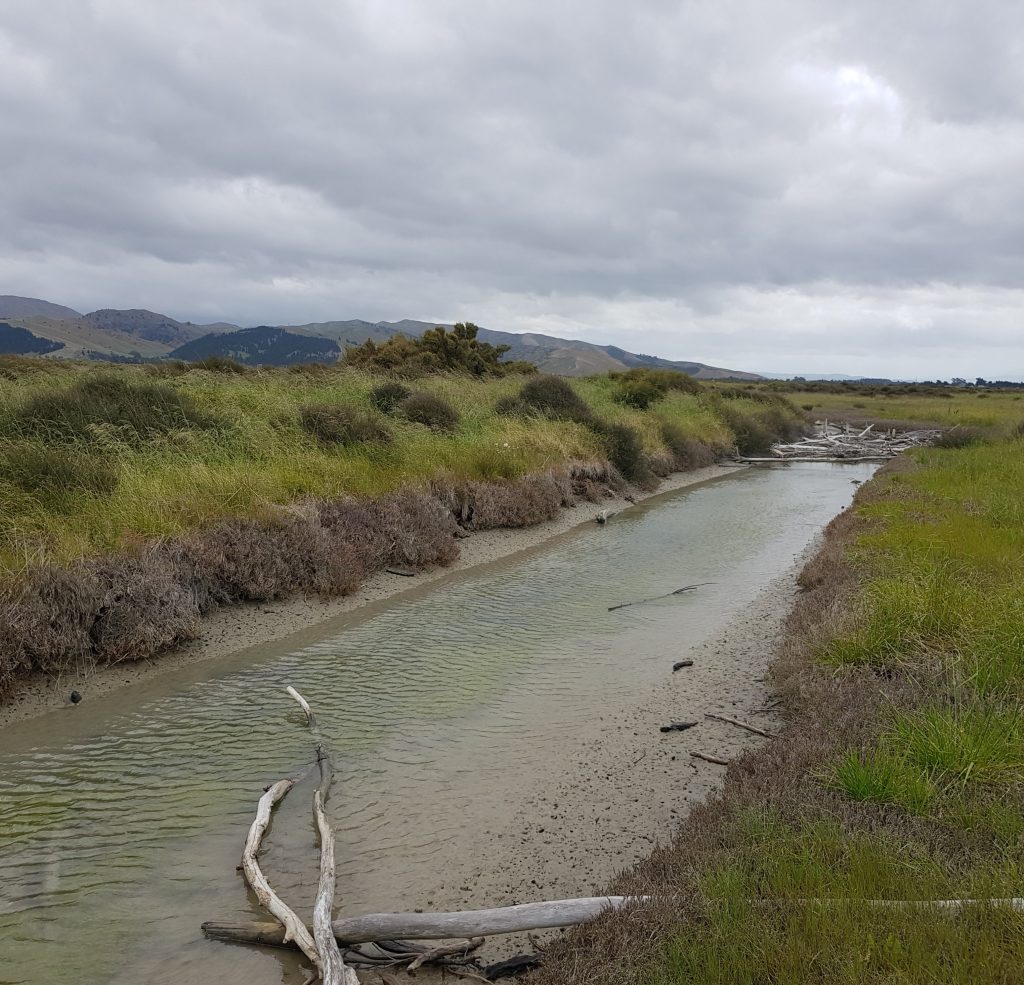
The rest of my journey was near identical to the beginning, and after three hours wandering the vast flat wetland I finally reached the place that I had started.
Steeped in history, this place carries the marks of some of New Zealand’s first people, has been shaped by their descendants, plundered by the Pākehā, used as a ship’s graveyard and finally a sanctuary for the remnants of the land’s feathered inhabitants.
Such a strange bleak place to carry all that meaning.
References:
Wairau Lagoons, including royal spoonbills
Making Peoples by James Belich
Old stone blocks linked to Tahiti by John Gibb
Te Tau Ihu o te Waka: Aa History of Maori of Nelson and Marlborough. Volume I: Te Tangata me Te Whenua – The People and the Land by Hilary and John Mitchell
SHIPPING Evening Star, Issue 20175, 15 May 1929
LOCAL AND GENERAL NEWS. New Zealand Herald, Volume LXVI, Issue 20263, 24 May 1929
T. S. S. Waverley The last surviving West Coast Gold Fields Steamer
